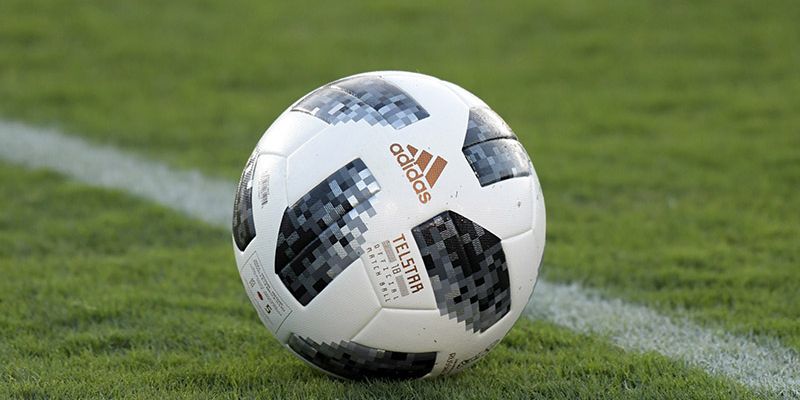Soccer Lines Explained
An over–under or over/under (O/U) bet is a wager in which a sportsbook will predict a number for a statistic in a given game[1] (usually the combined score of the two teams), and bettors wager that the actual number in the game will be either higher or lower than that number.[2][3] For example, in Super Bowl XXXIX, most Las Vegascasinos set the over–under for the score of the game at 46.0. A bettor could wager that the combined score of the two teams would be either more than or less than that number. Since the combined score of that game was 45, anyone who had bet on 'under' won.
- Soccer Betting Lines Explained
- Asian Soccer Lines Explained
- Soccer Field Lines Explained
- What Do The Lines In Soccer Mean

Initial and final value[edit]
The goal of a sportsbook is to have an equal value of bets on both sides of the over–under. In theory, this means that the manager could set the value at zero and then re-adjust based on either the number of incoming bets and/or events that influence the potential outcome. In practice, the initial value is based on both quantitative (e.g. win–loss record, average points per game, etc.) and anecdotal information (e.g. media reports, injury status of players, etc.).
Imagine the set-up as big lines of goalies stretching across the entire length of the sidelines – for each team. Meanwhile the first 5 players from each team enter the playing area from the front of their line to play some soccer (choose 2-3 balls to use all at the same time). Whenever a goal is scored on a team, just put the ball back into. A money line bet is on a team to win the game outright (with no point spread) at an adjusted cost. The favorite will have negative odds, while the underdog will have positive odds. The difference here is in the prize or payout, depending on which topic.

As with other types of bets where the odds of either outcome are meant to be even, the vigorish (or 'vig') is typically set at or about 5% of the total wager. Using American odds, this will result in both outcomes initially being quoted at -110 (i.e. bettors must risk $110 to win $100). If the amount bet on both outcomes is exactly even, using such odds would result in the sportsbook earning $5 in gross profit for every $110 wagered.
Of course, bettors will not necessarily risk the same amount of money on both outcomes every time. In such circumstances, there are two ways a sportsbook can mitigate the risk. The first is to adjust the O/U while keeping the odds of both at -110. For example, if the O/U for a football game is set at 45.5 and the action heavily favors the 'over' then the O/U could be adjusted to 46.5 to encourage bettors to take the 'under.' The risk here is that the sportsbook could lose a lot of money by being 'middled' - using the aforementioned example, if the final combined score is 46 then the sportsbook would be obligated to pay both the initial bettors who bet 'over' and the later bettors who bet 'under.'
The other method to mitigate risk is to adjust the odds on the initial O/U, which is slightly more complicated but eliminates the risk of being 'middled.' In the aforementioned example, the 'under' could be adjusted to -105 while the 'over' is changed to -115 (meaning bettors would have to risk $105 and $115 respectively to win $100) in order to make the original 'under' proposition more attractive (and the 'over' less so) to bettors. In actual scenarios, even adjustments of -100 (i.e. 'even money') and -120 are common place as sportsbooks typically endeavor to maintain steady margins and minimize risk.
Statistics[edit]
Though this bet is most commonly made with the combined score of the two teams, many other statistics can be used, including:
- In American football, a player's or team's total rushingyards or attempts, down conversions (first or third), interceptions, completions, field goal percentage, etc.
- In basketball, a player's or team's total assists, blocks, turnovers, steals, etc.
- In baseball, a player's or team's total number of home runs, RBIs, etc.

Dice[edit]
A variant of overunder betting, known as Under Over, is a dice game played at various festivals. The object of the game is to predict whether the dice will roll to a total of under 7, over 7, or at 7. The game is typically played with 2 dice.
A player typically places a wager on one of three spaces. These spaces are:

- Under 7 (usually pays 1–1)
- Over 7 (usually pays 1–1)
- 7 (usually pays 4–1)
For instance if one bets one dollar on under and the dealer rolls under, they gain a dollar as well as get their dollar back. If the dealer rolls a seven and one bets on it, they make four dollars. Once all the bets have been placed the attendant closes the betting board with a screen and then puts the dice through the chute. Players then get paid accordingly.
Soccer Betting Lines Explained
One variation of Under Over involves foam dice, two of which are thrown in the middle of the players; in another variation, two balls are thrown into a giant wheel consisting of twelve spaces of numbers ranging from 1–6. No wire fence is used to block the bets in that case.
Asian Soccer Lines Explained
References[edit]
Soccer Field Lines Explained
- ^Kochan, M. (2013). Secrets of Professional Sports Betting. Cardoza Publishing. p. 12. ISBN978-1-58042-438-7. Retrieved April 25, 2015.
- ^Williams, L.V.; Siegel, D.S. (2014). The Oxford Handbook of the Economics of Gambling. Oxford Handbooks in Economics Series. OUP USA. p. 205. ISBN978-0-19-979791-2.
- ^Fodor's Las Vegas 2015. Full-color Travel Guide. Fodor's Travel Publications. 2014. ISBN978-0-8041-4300-4.